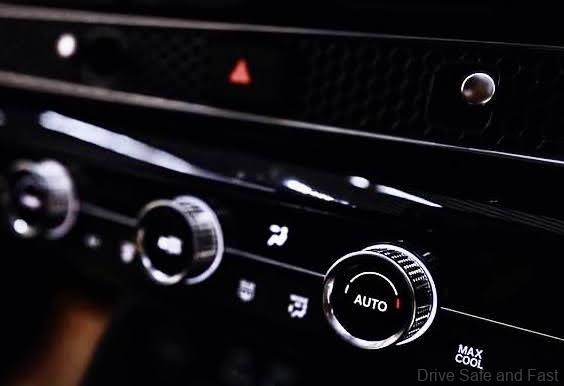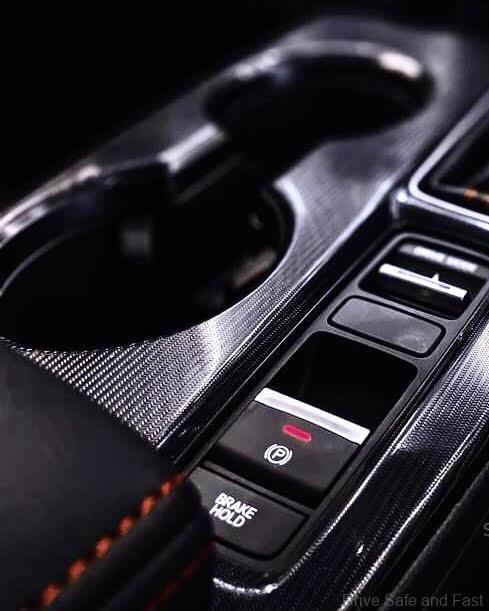This new Civic cabin challenges the European rivals.
On April 29th this year, Honda Japan unveiled a brand new 11th-generation Honda Civic Sedan and it immediately got a positive reaction from around the world. Civic fans and more are taken by the new design and more importantly the upmarket premium look and feel cabin. Yes, Honda cabin planners have taken the cabin fit, finish and material quality up a few notches and right next to its European rivals.
Production for the North American buyer started on May 6th this year and by August 2021 the first cars rolled into Honda Thailand showrooms. There is also a hatchback variant that should find a larger number of buyers if it comes to Malaysia.
This 2022 Civic has been reimagined for a new generation of drivers, with a clean and modern interpretation of Honda’s longstanding “Man Maximum/Machine Minimum” design philosophy. In essence, the M/M philosophy means maximizing the total environment for the driver and passengers, while minimizing the space needed for mechanical components.
As a result, the Civic features sporty design with a low cowl, excellent visibility, exceptional attention to detail and a space-efficient, human-centered interior.
A Human-Centered Interior and Technology
The Civic’s simple and clean interior design themes are an equally modern take on classic Civic design cues, such as the low cowl and an expansive outward view. The instrument panel and other interior surfaces have all been designed with a minimum number of cut lines to reduce visual distractions.
High-quality materials abound, especially on physical touch points, and extraordinary attention to detail was paid to the feel and operation of all switchgear and controls.
A visual focal point is a striking metal honeycomb mesh accent that stretches across the dash from door to door. More than just appealing to the eye, the mesh also serves as a visual dividing line between information above and controls below while also cleverly hiding the air vents.
The Civic’s front seats have been redesigned for maximum support and long-haul comfort, helping to turn even the most torturous commute into something drivers look forward to.
Technology is focused on intuitive ease of use, from the first all-digital LCD instrument panel ever in a Honda to new color touchscreen audio systems mounted high on the dash.
All Civic trims come standard with Apple CarPlay® and Android Auto™ integration, and wireless connectivity is available. For the first time, Bose premium sound will be available in Civic and has been custom engineered precisely for the Civic’s new interior.
Improved Visibility
The Civic’s classic design values pay dividends inside. The feeling of spaciousness is immediately felt and shared by all Civic occupants thanks to the low, flat beltline and uncluttered cabin design.
The pulled-back A-pillars, low hood, flat dashboard and hidden windshield wipers result in a windshield with clearly defined corners for a panoramic view, offering a horizontal angle of the view that is increased to 87 degrees compared to 84 degrees for the previous Civic.
Furthermore, the outside mirrors were mounted on the doors, rather than at the base of the A-pillar, creating a space and sightline between the front pillar and side view mirror for improved peripheral visibility.
In addition to featuring a square-shaped front glass, the flat instrumental panel was designed through CAD and clay models so that the joints and seams are positioned to reduce the visual noise from windshield reflections.
Additionally, the low cowl is the same height as the door windowsills for an uninterrupted and harmonious flow that extends from the dash all the way to the rear doors.
Taken together, the enhanced visibility afforded by the exterior structure and interior design make it easier for the driver to understand the vehicle’s position relative to its surroundings, whether traveling in a straight line or when cornering.

Interior Packaging
Honda’s outstanding interior packaging results in ample head, leg, shoulder and hip room for all passengers, with volume increased by 1.2 cu.-ft. for a maximum total of 99.0 cu.-ft. of passenger space. Beyond that, the new Civic increases the quality, comfort and user-friendliness of the interior space by making changes to the form and design.
In the rear, the extended wheelbase allowed for an increase in torso angle from 26 degrees to 27 degrees, which combined with the improved visibility makes for a more relaxed and less tiring rear seat, especially on long rides.
The new Civic also retains the generous rear seat room of the previous generation car, adding more upper body freedom thanks to the lowered shoulder line.
The rear overhang was shortened by 1.4-inches (35 mm) compared to the previous-generation Civic, however cargo usability was improved by expanding the lower side of the boot opening by 5.3 inches (134 mm) to make loading and unloading of baggage easier.
The 14.8 cu.-ft. of rear boot space easily accommodates four 9.5-inch golf bags, and the cargo area can be expanded by folding down the rear seatbacks for longer objects.














